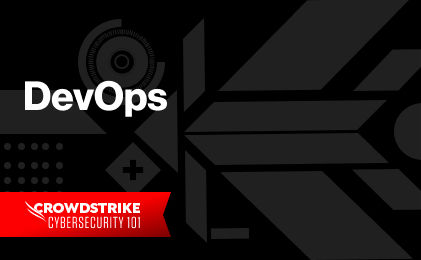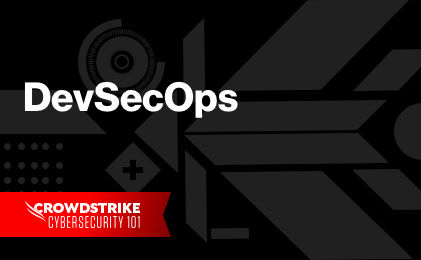Complete Guide to Next-Gen SIEM
Complete Guide to Next-Gen SIEM
As cyberattacks continue to rise in frequency, severity, and prominence, the need for security operations (SecOps) teams to protect against breaches and mitigate security risks has become more critical than ever. Organizations are facing increasingly sophisticated attackers in today's modern environments, and a reactive posture simply isn't enough. You have to adopt a proactive stance to maintain security.
In this article, we’ll delve into the world of SecOps, discussing its importance and shedding light on what an effective SecOps team and culture should look like in 2023 and beyond.
What is SecOps?
SecOps is an approach that combines the processes, tools, and highly skilled staff from both security and IT departments into a single, unified team. The primary focus of this team is to monitor and assess risk, as well as manage both proactive and reactive responses to security threats or incidents. By streamlining communication and collaboration between these traditionally separate departments, organizations can more effectively protect their digital assets and infrastructure.
A SecOps team may operate from a security operations center (SOC), which can be a dedicated physical location or a remote setup. This setup provides a centralized hub for coordinating security efforts and allows for real-time monitoring and rapid response to any potential threats or issues that arise.
Key Responsibilities of SecOps
Some of the key responsibilities that SecOps teams typically handle include the following.
Compliance
Ensuring the organization adheres to industry standards and regulations, such as GDPR, HIPAA, or PCI DSS, is a critical responsibility of SecOps teams. Compliance with these frameworks not only demonstrates a commitment to protecting sensitive data but also helps to reduce the risk of legal and financial penalties associated with non-compliance.
Monitoring
Keeping a constant watch on the organization's network and systems for signs of intrusion, suspicious activity, or potential vulnerabilities is a vital aspect of SecOps responsibilities. Teams will often employ third-party solutions to help them in this effort; these can include an intrusion detection and prevention system (IDPS), endpoint detection and response (EDR) tools, and a security information and event management (SIEM) system.
Security Training
Educating employees on the importance of security is a crucial aspect of a comprehensive SecOps strategy. This involves providing teams with the necessary training and resources to identify and report potential threats, as well as fostering a security-conscious culture within the organization.
Employees often serve as the first line of defense against security events, particularly when it comes to social engineering attacks like phishing or spear-phishing. Regular security awareness training, including real-world examples and simulations, such as mock phishing exercises, can help employees gain a better understanding of the risks they face and their role in maintaining the organization's security.
Incident Response
Developing and implementing a plan for how to react when a security breach or attack occurs is critical. This plan, often referred to as an incident response (IR) plan, should include clearly defined steps to contain the damage, eliminate the threat, and recover from the incident. Having a well-prepared IR plan in place not only minimizes the impact of security incidents but also enables organizations to resume normal operations more quickly and efficiently.
A comprehensive IR plan should outline the roles and responsibilities of key team members, establish communication protocols for internal and external stakeholders, and detail the specific procedures to be followed in various types of events. Additionally, the plan should incorporate guidelines for conducting a thorough post-incident analysis to identify the root cause of a breach, evaluate the effectiveness of the response, and implement any necessary improvements to prevent future occurrences.
It’s up to SecOps teams to design, implement, and continuously update their organizational IR plan as they adapt to new infrastructure and new threats.
Forensics/Post-Mortem
Analyzing security incidents after the fact is a key responsibility for SecOps, as it helps organizations understand what happened, how it happened, and what can be done to prevent similar occurrences in the future.
This post-incident analysis, often referred to as a post-mortem or after-action review, may involve digital forensics, log analysis, and root cause identification to gain a comprehensive understanding of the event.
Why Is SecOps Important?
Modern software development is happening at a faster pace than ever before. Applications are built with the cloud as a first-choice destination, and the threat landscape is broad and dynamic. Legacy security tooling and processes are no longer effective; security teams must combine operational know-how and action with modern tooling to properly protect digital assets.
Below we discuss three reasons an effective SecOps strategy is critical in today’s environment.
Increase in Number, Type, and Sophistication of Security Threats
Attackers have access to a wealth of extremely powerful, commoditized resources to assist them in coming up with new tactics, techniques, and procedures (TTPs) to exploit to exploit vulnerabilities in systems and networks.
This has led to a significant increase in the number, type, and complexity of security threats that organizations must contend with, making it essential to have a dedicated SecOps team to stay ahead of these evolving risks.
Transition from Legacy Environments to Distributed/Cloud Environments
Traditional IT environments, with well-defined network borders, have given way to more distributed and cloud-based infrastructures. This shift has led to a fuzzier, if not entirely dissolved, network border, with many resources being publicly reachable by default.
As a result, organizations must adapt their security strategies to protect these new, more complex environments, and SecOps teams play a crucial role in this adaptation process.
High-Visibility Breaches and Their Impact on Business Continuity
News of data breaches and cyberattacks travels fast on the internet, making it crucial for organizations to have a robust security posture to prevent and mitigate such incidents. The fallout from a successful attack can be immense, with far-reaching consequences that extend beyond the immediate damage.
A compromise or exfiltration of customer data not only damages an organization's reputation but also exposes it to potential legal liabilities, regulatory penalties, and loss of customer trust.
Requirements of a Modern SecOps Strategy
As the cybersecurity landscape evolves, so too must the SecOps initiatives that organizations adopt to stay ahead of threats. A successful modern SecOps strategy will be a multi-faceted approach, employing modern tools, expert staff, and a culture that embraces a rapid-response operational posture when it comes to security.
Staff Expertise
A SecOps team needs to have a diverse security skillset, including expertise in incident response, vulnerability assessment, architecture, and more. Additionally, the team must be comfortable working in modern, cloud-first environments and be able to adapt to the rapid pace of technological change.
Organizational Buy-In
Like DevOps, SecOps is built on the foundation of collaboration. To be successful, SecOps teams must work closely with developers, stakeholders, and other key players within the organization. Achieving this level of cooperation can be difficult without top-down support, so it is crucial that the importance of SecOps is recognized and prioritized throughout the organization.
Modern Tooling
Legacy security tools were designed to address a vastly different threat landscape with a more well-defined network border and a less dynamic asset map. To stay ahead of modern threats, SecOps teams must leverage cutting-edge tools that are better suited to handle the complexities of today's distributed and cloud-based environments.
Single Solution Security Management
In the heat of an attack, every second counts. If SecOps personnel are forced to manually correlate relevant security and event data from multiple disparate tools and dashboards, valuable time that could be spent identifying, isolating, and resolving the issue is wasted. Implementing a single, shared source of truth with full-environment visibility can significantly streamline the SecOps process and improve response times.
By addressing these critical factors, organizations can build a modern SecOps initiative that is not only better equipped to handle the challenges of today's cybersecurity landscape but also well-prepared to adapt to the ever-changing threats and technologies of the future.
Securing the Future: The Importance of SecOps
The rapid increase in the frequency, severity, and prominence of cyberattacks has underscored the need for security operations (SecOps) teams to protect organizations against breaches and mitigate security risks. Modern SecOps initiatives must be agile, flexible, and capable of adapting to an ever-evolving threat landscape.
A successful modern SecOps initiative is highly dependent on organizational buy-in, staff expertise, and having the right platform and tools in place. By investing in these areas and fostering a collaborative culture, organizations can build a robust and proactive security posture to better protect their digital assets and infrastructure.
Any organization navigating today's digital world must ask: Is our security team equipped to handle the modern threat landscape? If not, now is the time to take action and prioritize the development of your SecOps implementation to safeguard the organization's future.
Discover the world’s leading AI-native platform for next-gen SIEM and log management
Elevate your cybersecurity with the CrowdStrike Falcon® platform, the premier AI-native platform for SIEM and log management. Experience security logging at a petabyte scale, choosing between cloud-native or self-hosted deployment options. Log your data with a powerful, index-free architecture, without bottlenecks, allowing threat hunting with over 1 PB of data ingestion per day. Ensure real-time search capabilities to outpace adversaries, achieving sub-second latency for complex queries. Benefit from 360-degree visibility, consolidating data to break down silos and enabling security, IT, and DevOps teams to hunt threats, monitor performance, and ensure compliance seamlessly across 3 billion events in less than 1 second.







